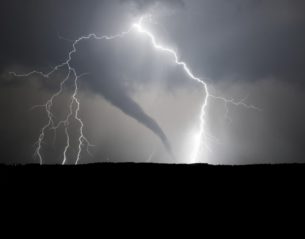Severe Weather Safety – What to Include in a Written Emergency Plan
Search the Library

Severe weather can strike anywhere and is capable of impacting thousands of lives in just minutes. The heavy rainfall and destructive winds of thunderstorms, tornadoes, tropical storms and hurricanes can cause property damage, power outages, business interruptions, severe injuries and loss of life. Be prepared for severe weather by having a strong emergency response plan in place, being aware of changing weather conditions and using technology to respond quickly in an emergency.
Use a written emergency plan to outline procedures for monitoring weather conditions and processes for communicating severe weather alerts. The plan should outline:
- Employee responsibilities
- Designated shelter locations
- Types of communication/alert systems used
- Facility closing procedures
- Emergency phone numbers
- Disaster recovery procedures
Responsibility for monitoring weather should be assigned to a specific department, team or individual who is thoroughly trained on the emergency plan.
One of the most important pieces of weather preparedness is alertness to changing weather conditions. Live television and radios are still reliable sources, but new technologies like mobile and desktop applications have further advanced our ability to stay alert. Some apps provide automated text messages and emails, which provide the timeliest severe weather alerts and forecasts.
For more tips on severe weather preparedness, visit our severe weather safety page, OSHA’s site for Emergency Preparedness and Response.
Share this resource:
URL coppied to clipboard.
Or send it directly to someone via our email form:
